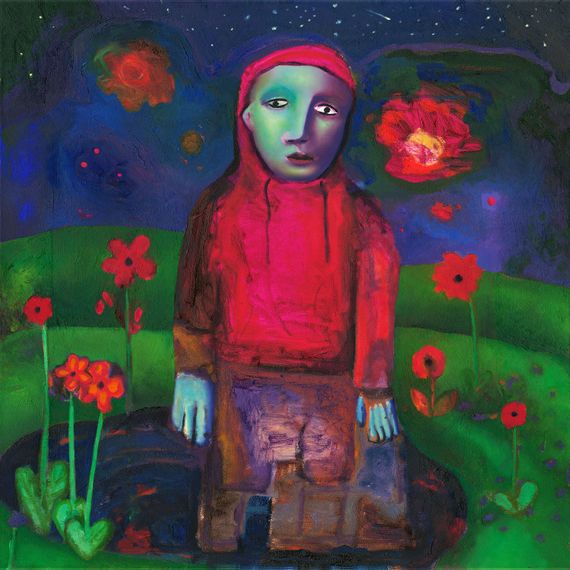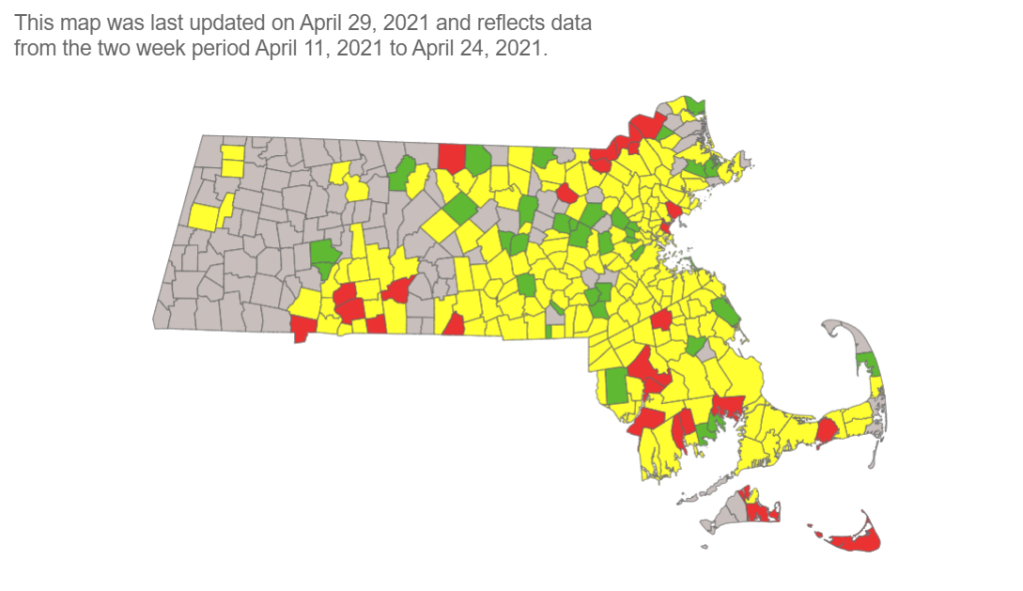red.indah.link
Half of counties advance to a less restrictive level;
Nearly every New Mexico county now Turquoise or Green
SANTA FE – The New Mexico Department of Health on Friday announced the updated statewide COVID-19 map, with updated key health metrics used to assign risk levels to counties under the Red-Yellow-Green COVID-19 framework now in effect. The updates to the criteria, announced by the governor and state officials on Wednesday, are made as the state’s nation-leading vaccine distribution effort is over time likely to reduce the number of asymptomatic people seeking out and receiving tests for COVID-19.
As of April 30, 24 New Mexico counties are at the Turquoise Level and six are at the Green Level, at which there are fewer restrictions on commercial and day-to-day activities amid decreased virus risk. 30 of 33 New Mexico counties are at the least restrictive levels.
Three counties are at the Yellow Level as of April 30. Zero counties are at the Red Level, signifying highest risk.
The color-coded framework now includes a criterion that benefits counties as their vaccination rates improve, incorporating an essential new metric that reflects increasing vaccination rates in counties all across the state as more supply becomes available.
“Our intention here is and has always been to ensure the color-coding of the map – and the associated requirements for each county – continue to match the actual risk level on the ground in each county,” said Human Services Secretary David Scrase, M.D. “As our models show test positivity is likely to become more elastic over time, and as fewer New Mexicans will require COVID-19 testing amid increasing vaccinations, we want to provide counties the assurance that they can continue to progress in accordance with the actual risk they face.”
“New Mexicans should continue to get vaccinated at the very first opportunity,” said Health Secretary Tracie Collins, M.D. “Not only will it hasten the end of the worst of the pandemic, it will enhance counties’ and communities’ ability to safely begin more and more commercial and day-to-day activities without endangering public health.”
New Mexicans can register for their COVID-19 vaccination at vaccineNM.org.
Counties that may operate at the Turquoise Level as of April 30 are: Cibola, Colfax, Curry, De Baca, Eddy, Guadalupe, Grant, Harding, Lea, Lincoln, Los Alamos, Luna, McKinley, Mora, Quay, Rio Arriba, Roosevelt, San Miguel, Santa Fe, Sierra, Socorro, Taos, Torrance, and Union.
Counties that met both of the health metric thresholds and may operate at the Green Level as of April 30 are: Bernalillo, Doña Ana, Hidalgo, Otero, Sandoval, and San Juan.
Counties that met one of the health metric thresholds and may operate at the Yellow Level as of April 30 are: Catron, Chaves, and Valencia.
Effective Friday, April 30, the health metrics used to determine a county’s risk level are:
- A new per-capita rate of new COVID-19 cases of no greater than 10 per 100,000 inhabitants over the most recent 14-day reporting period
- An average positivity rate less than or equal to 7.5 percent over the most recent 14-day reporting period
- A county with a fully vaccinated rate at or above a target, beginning at 35% as of April 30 and increasing to 40% for the regularly-scheduled map update on May 5, that will increase 5% every other week as more vaccinations are completed
- As an example, the vaccination rate metric will increase to 45 percent for the next biweekly map update on May 19
A county that meets none of the criteria upon the biweekly Department of Health map update will be at the Red Level. A county meeting one will be at the Yellow Level. A county meeting two criteria is at the Green Level. A county meeting all three criteria, or having maintained the Green Level for two consecutive biweekly map update periods, is at the Turquoise Level.
In addition, counties that reach the Turquoise Level will move to a four-week update, as opposed to biweekly. In other words, once a county reaches the Turquoise Level they will maintain the Turquoise Level for at least the next four weeks, whereas up until now the time period between updates has been two weeks.
Previously, the health metrics were more restrictive; the new per-capita case rate was 8 per 100,000 inhabitants and the average new positivity rate was 5 percent. Vaccination rates were not part of the equation.
The public health order, the red-to-green framework and frequently asked questions are all available at cv.nmhealth.org/redtogreen, where New Mexicans can also view the test positivity rate and new case incidence for each county.
The categories and definitions for each risk level are available below and available at cv.nmhealth.org/redtogreen.
TURQUOISE LEVEL:
Counties at the Turquoise Level have three of the following or two of the following in two consecutive reporting periods: 1) a new COVID-19 average daily case incidence rate of no greater than 10 cases per 100,000 inhabitants during the most recent two-week period, 2) an average percent of positive COVID-19 test results less than or equal to 7.5%, or 3) a fully vaccinated rate at or above 35%.
Essential businesses (non-retail): No capacity restrictions but operations must be limited to only those absolutely necessary to carry out essential functions
Essential retail spaces: 75% of maximum capacity for indoor spaces and 100% outdoor
Food and drink establishments (if NM Safe Certified): 75% of maximum capacity for indoor dining; 75% of maximum capacity for outdoor dining
Close-contact businesses: 75% of maximum capacity; no restrictions on outdoor spaces
Large entertainment venues: 33% of maximum capacity for any indoor/enclosed space on premises; 75% of any outdoor space on premises
Recreational facilities: 50% of maximum capacity of any indoor/enclosed space on the premises; 75% of any outdoor space on premises
Bars and clubs: 33% of maximum capacity of any indoor/enclosed space on premises; 75% of any outdoor space on premises, where applicable
**All other businesses: 75% of maximum capacity indoors; no restrictions on outdoor spaces
Houses of worship: May operate at 100% capacity indoors or outdoors should they so choose
Places of lodging: No maximum occupancy restrictions for those that have completed NM Safe Certified training; 50% of maximum occupancy for all others; 15 guests maximum for vacation rentals
Mass gatherings limit: 150 persons
GREEN LEVEL:
Counties at the Green Level have two of the following: 1) a new COVID-19 average daily case incidence rate of no greater than 10 cases per 100,000 inhabitants during the most recent two-week period, 2) an average percent of positive COVID-19 test results no greater than 7.5%, or 3) a fully vaccinated rate at or above 35%.
Essential businesses (non-retail): No capacity restrictions but operations must be limited to only those absolutely necessary to carry out essential functions
Essential retail spaces: 50% of maximum capacity (indoor and outdoor)
Food and drink establishments (if NM Safe Certified): 50% of maximum capacity for indoor dining; 75% of maximum capacity for outdoor dining
Close-contact businesses: 50% of maximum capacity (indoor and outdoor)
Large entertainment venues: 25% of maximum capacity for any indoor/enclosed space on premises; 50% of any outdoor space on premises
Recreational facilities: 25% of maximum capacity of any indoor/enclosed space on the premises; 50% of any outdoor space on the premises
Bars and clubs: 25% of maximum capacity of any outdoor space on premises, where applicable; indoor not permitted
**All other businesses: 50% of maximum capacity (indoor and outdoor)
Houses of worship: May operate at 100% capacity indoors or outdoors should they so choose
Places of lodging: 75% of maximum occupancy for those that have completed NM Safe Certified training; 40% of maximum occupancy for all others; 10 guests maximum for vacation rentals
Mass gatherings limit: 20 persons
YELLOW LEVEL:
Counties at the Yellow Level are those who have one of the following: 1) a new COVID-19 average daily case incidence rate of no greater than 10 cases per 100,000 inhabitants during the most recent two-week period, 2) an average percent of positive COVID-19 test results no greater than 7.5%, or 3) a fully vaccinated rate at or above 35%.
Essential businesses (non-retail): No capacity restrictions but operations must be limited to only those absolutely necessary to carry out essential functions
Essential retail spaces: 33% of maximum capacity (indoor and outdoor)
Food and drink establishments (if NM Safe Certified): 33% of maximum capacity for indoor dining; 75% of maximum capacity for outdoors dining; any establishment serving alcohol must close by 10 p.m. each night
Close-contact businesses: 33% of maximum capacity or 20 customers at one time, whichever is smaller; 33% of any outdoor space on the premises
Large entertainment venues: 25% of maximum capacity of any outdoor space on premises; indoor not permitted with the limited exception of operating up to 25% of maximum capacity for recording and broadcasting entertainment without any in-person audience
Recreational facilities: 33% of any outdoor space on the premises; indoor not permitted
Bars and clubs: May not operate
**All other businesses: 33% of maximum capacity (indoor and outdoor)
Houses of worship: May operate at 100% capacity indoors or outdoors should they so choose
Places of lodging: 60% of maximum occupancy for those that have completed NM Safe Certified training; 33% of maximum occupancy for all others; 5 guests maximum for vacation rentals
Mass gatherings limit: 10 persons
RED LEVEL:
Counties at the Red Level are those with a new COVID-19 case incident rate of greater than 8 cases per 100,000 inhabitants during the most recent two-week period and an average percent of positive COVID-19 test results over the most recent 14-day period greater than 5%.
Essential businesses (non-retail): No capacity restrictions but must limit operations to only those absolutely necessary to carry out essential functions
Essential retail spaces: 25% of maximum capacity (indoor and outdoor)
Food and drink establishments: No indoor dining permitted; 25% of maximum capacity for outdoor dining; any establishment serving alcohol must close by 9 p.m. each night
Close-contact businesses: 25% of maximum capacity or 10 customers at one time, whichever is smaller; 25% of any outdoor space on the premises
Large entertainment venues: May not operate
Recreational facilities: 25% of maximum capacity of any outdoor space on the premises; indoor not permitted
Bars and clubs: May not operate
**All other businesses: 25% of maximum capacity (indoor and outdoor)
Houses of worship: May operate at 100% capacity indoors or outdoors should they so choose
Places of lodging: 40% of maximum occupancy for those that have completed NM Safe Certified training; 25% of maximum occupancy for all others; 5 guests maximum for vacation rentals
Mass gatherings limit: 5 persons
Categories and definitions within the public health order:
Essential businesses (non-retail): These are any business or nonprofit entity falling within one or more of the following categories:
- Health care operations including hospitals, walk-in-care health facilities, pharmacies, medical wholesale and distribution, home health care workers or aides for the elderly, emergency dental facilities, nursing homes, residential health care facilities, research facilities, congregate care facilities, intermediate care facilities for those with intellectual or developmental disabilities, supportive living homes, home health care providers, drug and alcohol recovery support services, and medical supplies and equipment manufacturers and providers;
- Homeless shelters, food banks, and other services providing care to indigent or needy populations;
- Childcare facilities;
- Farms, ranches, and other food cultivation, processing, or packaging operations;
- Infrastructure operations including, but not limited to, public works construction, commercial and residential construction and maintenance, self-storage facilities, airport operations, public transportation, airlines, taxis, private transportation providers, transportation network companies, water, gas, electrical, oil drilling, oil refining, natural resources extraction or mining operations, nuclear material research and enrichment, those attendant to the repair and construction of roads and highways, gas stations, solid waste collection and removal, trash and recycling collection, processing and disposal, sewer, data and internet providers, data centers, technology support operations, and telecommunications systems;
- Manufacturing operations involved in food processing, manufacturing agents, chemicals, fertilizer, pharmaceuticals, sanitary products, household paper products, microelectronics/semiconductor, primary metals manufacturers, electrical equipment, appliance, and component manufacturers, and transportation equipment manufacturers;
- Services necessary to maintain the safety and sanitation of residences or essential businesses including security services, towing services, custodial services, plumbers, electricians, and other skilled trades;
- Veterinary and livestock services, animal shelters and facilities providing pet adoption, daycare, or boarding services;
- Media services;
- Utilities, including their contractors, suppliers, and supportive operations, engaged in power generation, fuel supply and transmission, water and wastewater supply;
- Crematoriums, funeral homes and cemeteries;
- Banks, credit unions, insurance providers, payroll services, brokerage services, and investment management firms;
- Businesses providing mailing and shipping services
- Laboratories and defense and national security-related operations supporting the United States government, a contractor to the United States government, or any federal entity;
- Professional services, such as legal or accounting services, but only where necessary to assist in compliance with legally mandated activities; and
- Logistics, and also businesses that store, transport, or deliver groceries, food, materials, goods or services directly to residences, retailers, government institutions, or essential businesses.
Essential retail spaces: These include grocery stores, supermarkets, food banks, farmers’ markets and vendors who sell food, convenience stores, and other businesses that generate more than one-third of their revenue from the sale of canned food, dry goods, fresh fruits and vegetables, pet food, animal feed or supplies, fresh meats, fish, and poultry, and any other consumable food and drink products; automobile repair facilities, bike repair facilities, and retailers who generate the majority of their revenue from the sale of automobile or bike repair products; hardware stores; laundromats; and dry cleaner services.
Food and drink establishments: These are restaurants, breweries, wineries, distillers, cafes, coffee shops, or other similar establishments that offer food or drink.
Close-contact businesses: These are barbershops, hair salons, tattoo parlors, nail salons, spas, massage therapy services, esthetician clinics and tanning salons.
Recreational facilities: These are any publicly or privately owned facility typically or actually used for recreational activities capable of bringing persons within close proximity of one another, including aquariums, amusement parks, arcades, basketball courts, baseball fields, bowling alleys, botanical gardens, family entertainment centers, football fields, go-kart courses, golf courses, ice-skating rinks, museums with interactive displays or exhibits, miniature golf courses, ski areas, soccer fields, swimming pools, tennis courts, youth programs, guided raft tours, guided balloon tours and zoos.
Bars and clubs: These are any business that typically or actually generates more than half of its revenue from the sale of alcohol for on-premises consumption — including adult entertainment venues, nightclubs, and dance clubs, regardless of the source of their revenue.
Large entertainment venues: These are as any publicly or privately owned venue typically or actually used to host large audiences for the purposes of entertainment or amusement, including racetracks, concert venues, movie theaters, performance venues, professional sports venues and theaters.
Houses of worship: These are any church, synagogue, mosque, or other gathering space where persons congregate to exercise their religious beliefs.
Places of lodging: These are hotels, motels, RV parks, and short-term vacation rentals.
Mass gatherings: These are any public gathering, private gathering, organized event, ceremony, parade, funeral, or any other grouping that brings together a specified number of individuals in a single room or connected space, confined outdoor space, or open outdoor space. “Mass gatherings” also include coordinated events in which individuals gather in vehicles. “Mass gatherings” do not include the presence of any number of individuals where those individuals regularly reside. “Mass gathering” does not include individuals who are public officials or public employees in the course and scope of their employment.
**All other businesses: These are any entities that are not identified explicitly as an “essential business,” “house of worship,” “recreational facility,” “large entertainment venue,” “food and drink establishment,” “bars or clubs” or “place of lodging”.” Examples would include non-essential retail spaces like a clothing store, a gym, a group fitness class or a personal training service, among others.
The Link Lonk
April 30, 2021 at 11:42PM
https://cv.nmhealth.org/2021/04/30/updated-red-yellow-green-turquoise-criteria-now-in-effect-statewide-covid-19-map-updated/
Updated Red-Yellow-Green-Turquoise criteria now in effect, statewide COVID-19 map updated | NMDOH - Coronavirus Updates - NMDOH - Department of Health
https://news.google.com/search?q=Red&hl=en-US&gl=US&ceid=US:en














